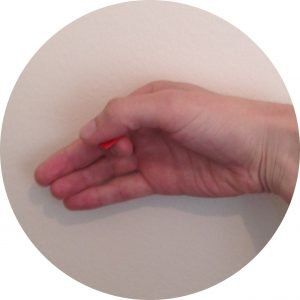1.1 - Introduction to the guitar
In my time teaching guitar, I’ve worked with countless beginners and developed a tried-and-tested set of lessons to successfully set them on their way to accomplishing their musical goals, here I thought I'd share some of those in digital form! The lessons are structured to gradually introduce you to the techniques and chord shapes you’ll need to play acoustic rhythm guitar, starting with simply what parts of the guitar are called, and then progressing through a number of increasingly challenging songs.
These lessons work well as an 8 week course, spending a week on each lesson, but everyone learns differently and you may wish to tackle a few lessons at a time so as to have more material to work on. In terms of practising, it’s better to practise little and often - 10 minutes a day - than to cram 2 hours into one day and then not pick up your guitar for the rest of the week.
Before you start playing, it’s important to be familiar with some terminology which will be used throughout these lessons.
The
Anatomy of the guitar
-The Bridge - anchors the strings, and supports the saddle.
-The Saddle - sets the length of the strings, from the saddle to the nut.
-The Sound-hole and Body - together, amplify the strings.
-The Neck - supports the fingerboard and frets.
-The Fingerboard and Frets - holding a string with your finger against the fingerboard behind a fret will give you a note. The frets are positioned to shorten the string, giving different notes or pitches.
-The Strings - cross the neck, and body between the saddle and the nut.
-The Strings - cross the neck, and body between the saddle and the nut.
-The Headstock - supports the nut and tuning pegs.
-The Nut - sets the length of the strings at the headstock end.
-The Tuning Pegs - adjust the tension of the strings to the right pitch.
Tuning up
It doesn’t matter how good you are on the guitar; if it’s out of tune, it’s not going to sound good! For this reason, you should tune your guitar every time you pick it up.
Standard tuning, from the lowest string to the highest (thickest to the thinnest!) is: E,A,D,G,B,E, easily remembered with the mnemonic,
Eddie
Ate
Dynamite,
Good
Bye
Eddie!
I recommend buying an electronic tuner, which can be picked up cheaply, and do much of the work for you!
Plectrums
A plectrum, or pick, is a tool used to pluck and strum the strings of the guitar. They come in all shapes, sizes and materials, although most are made from plastic. I recommend buying a variety of brands and thicknesses and trying them all out to find which you’re most comfortable with. It makes sense to find a type you like and stick with it, so that you’re using the same equipment every time you practise.
This photo shows how to correctly hold a plectrum, between the index finger and thumb of your right hand, with your index finger curled into an ‘n’ shape.
Notice that only a small area of the plectrum (the sharpest corner) is visible, any more will result in the plectrum getting caught in the strings, which can result in broken strings, broken plectrums and unpleasant noises!
The Capo
A capo is a device used on the guitar to shorten the length of the strings, this raises the pitch of the guitar by one semi-tone per fret. As we saw in the Anatomy of the Guitar length of the strings is usually from the saddle to the nut. The capo turns one of the frets of a guitar into a new nut, in fact capo derives from the word capotasto which is an old Italian word used to refer to the nut of a stringed instrument.
Why would you need to do this? Capo’s are most commonly used to change the key of the guitar to better suit a singers vocal range, whilst still allowing you to use open chord voicings.
Place the capo behind the necessary fret, parallel to the fret wire (behind means on the nut-side of the fret).


